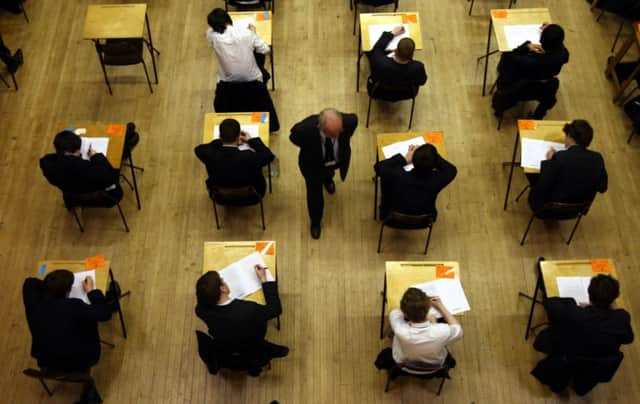Turbulent results blamed on exams shake-up


The reforms, which are the greatest shake-up to GCSEs for years, mean that it is very difficult to compare this year’s results with those of previous years.
Overall, this year 330 state secondaries (11.2 per cent) fell below the Government’s key floor target, meaning that less than 40 per cent of pupils at each of these schools gained at least five Cs at GCSE, including English and maths, and also did not meet national average level of progress made in these two subjects between the ages of 11 and 16.
Last year, 154 schools fell below that threshold.
Advertisement
Hide AdAdvertisement
Hide AdA*-C, including English and maths, is the main measure that schools are judged on in the annual rankings. Perhaps the biggest change to the tables is Ministers’ decision that only the first result in a subject now counts towards a school’s results.
The move came amid concerns that schools were attempting to play the system by entering pupils early, or multiple times, often in subjects such as English and maths, to increase their chances of getting an all-important A*-C grade. Figures published by exams regulator Ofqual ahead of last summer’s GCSE results showed that the move to end early and multiple entry had had a significant impact.
The statistics showed a 40 per cent drop in the number of youngsters taking the exams before they are 16 (Year 11) – the age at which pupils usually sit GCSEs.
In maths alone, early entries dropped by 82 per cent, while in English it was down 86 per cent and English language was down 81 per cent. According to the Department for Education (DfE), the other main reform to affect this year’s results is changes to vocational qualifications.
Advertisement
Hide AdAdvertisement
Hide AdFollowing a review, it was decided to strip out the vast majority of these practical courses, many of which counted in the past as more than one GCSE in the rankings.
Now only a small number remain, and each qualification is considered equal to one GCSE. The number of non-GCSE courses than can be counted in the performances tables has also been capped at two per pupil.
Figures showing how many state schools would have fallen under the benchmark this year under last year’s rules have not yet been published. Alongside these are a number of other reforms, including less coursework, a move away from students taking exams throughout their course to end-of-GCSE exams, and removing speaking and listening from final English grades.
International GCSEs (IGCSEs) are also being taken out of the rankings which has led to many independent
Advertisement
Hide AdAdvertisement
Hide AdThese courses are favoured by many private schools, which see them as rigorous qualifications, and the change has clearly affected many top fee-paying schools’ standing in the latest tables with many schools being ranked as having no students achieving the GCSE benchmark.
IGCSEs were once lauded by the coalition Government, but it was announced last year that unregulated IGCSEs will not be included in the tables this year.
As part of the reforms, new, tougher GCSEs are due to be brought into schools over the next two years, with the first courses introduced this coming September. Head teachers have previously suggested that “volatility” in last summer’s results could also have an impact.
LEAGUE TABLES IN FULL
Click the links to view tables for each local authority, from the Department for Education
• BARNSLEY
• BRADFORD
• HULL
• KIRKLEES
• LEEDS
• YORK